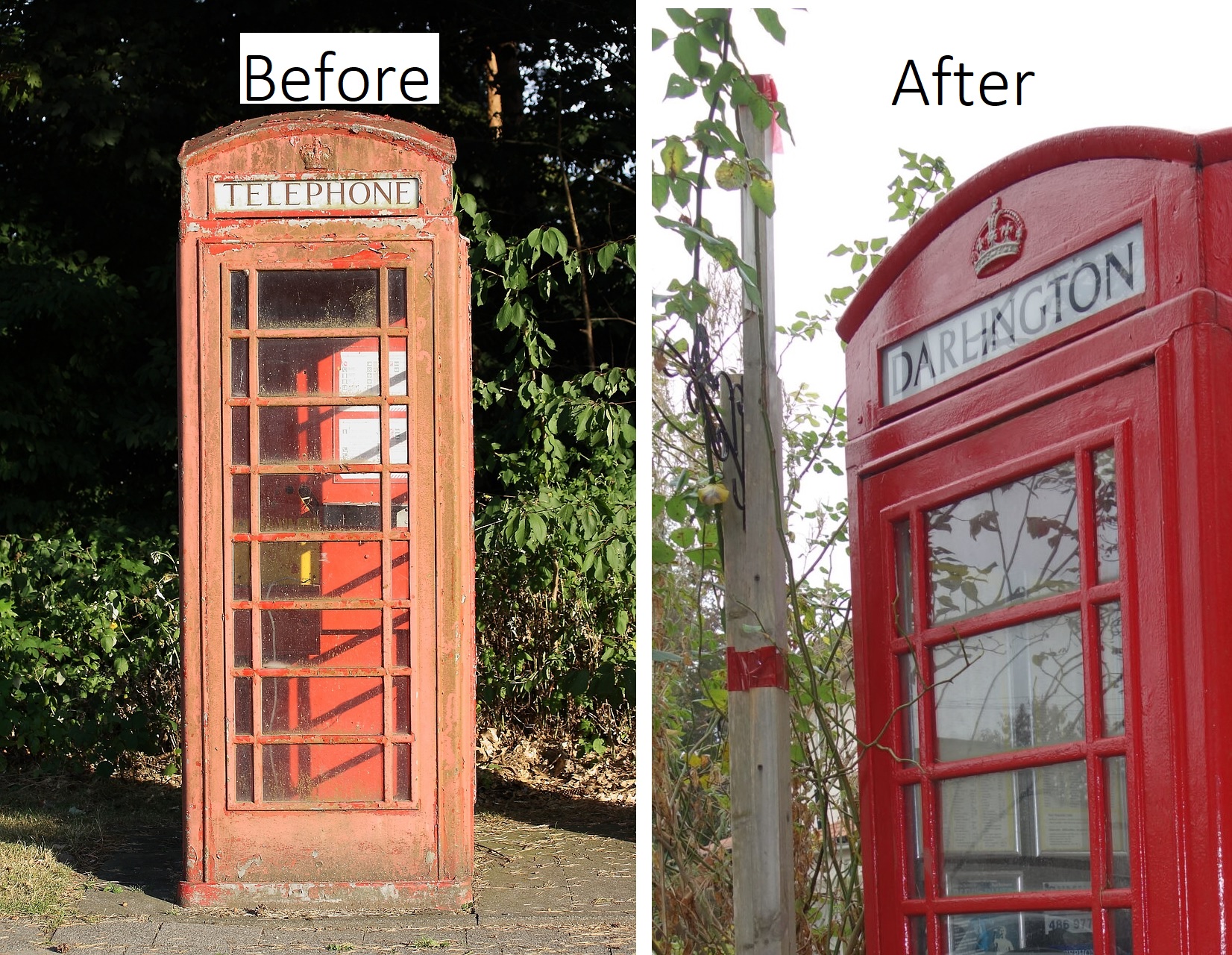There are few things as quintessentially British as the iconic red telephone kiosk.
First produced by The Post Office in 1921 the K1 (Kiosk 1) was made of concrete and painted white with a red door. As of 2021 there are 14 K1 kiosks in the UK, of these 7 have awarded a grade 2 listing by Historic England.
In 1926 the K2 kiosk was produced which was painted red and emblazoned with the Tudor Crown. Designed by British architect Sir Giles Gilbert Scott, there were to be 1,700 installations over the next nine years most of which were sited in London. In 1953 having recently ascended the throne Queen Elizabeth 11 replaced the Tudor Crown with the St Edwards Crown which represented the actual crown used in British coronations and was painted the same red as the rest of the kiosk.
In the 1980s British Telecom (BT) took over the telephone network from The Post Office and announced that the kiosks would be repainted in yellow as this was BTs corporate colour. There was an immediate public outcry with the Daily Mail launching a campaign entitled “against the yellow peril”, the proposal was the subject of heated debates in Parliament with ministers calling on BT to abandon the scheme. As a result of the public outcry BT backed down and the colour red remained. In the early 1990s the St Edwards crown was painted in gold when the heritage value of red kiosks began to be widely recognised.
Various designs followed on from the K2 between 1926 and 1968 culminating in the K8 which was the final design in 1968. In 1985 BT announced that the old red telephone boxes would be replaced because they no longer met the needs of customers, were expensive, difficult to clean and could not be used by handicapped people. Another vociferous public campaign followed but this time BT did not relent.
From 1996 BT introduced the KX100 PLUS kiosk the design of which departed significantly from the old style red kiosks. The LinkUK launched in 2017 was the final design and combined a public telephone service with an electronic advertising hoarding. It had a tablet, two USB charging ports, and a phone that offered free calling to UK numbers and free WiFi.
There are around 5,000 public phone boxes protected from closure around the UK. These are in areas where there are high accident rates and poor mobile telephone coverage. Some have battery support in the event there is a power cut. Around 50 calls each year are made from these “protected” kiosks.
Payphone use dropped from about 800 million minutes in 2002 to 7 million in 2020 as 96% of UK adults had a mobile phone.
The redundant traditional red telephone kiosks have been put to good uses as community libraries, art exhibitions, housing for defibrillators and ATM machines and many other purposes.
In 2021 Darlington Business Centre sourced a very neglected K6 telephone kiosk dating from 1935 this iconic statement of English heritage to commemorate the Silver Jubilee of the coronation of King George V in 1935 was then the subject of a period of restoration and now sits proudly at the entrance to our car park acting as a landmark for visitors to the centre.

